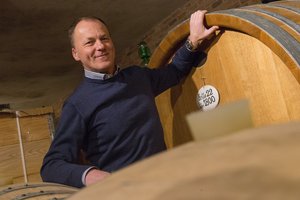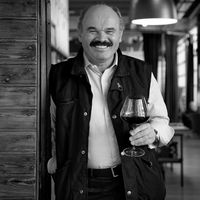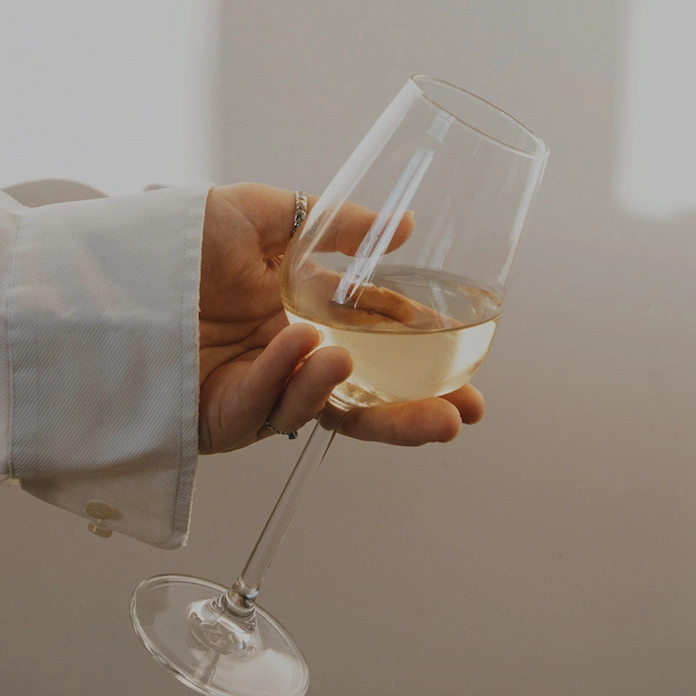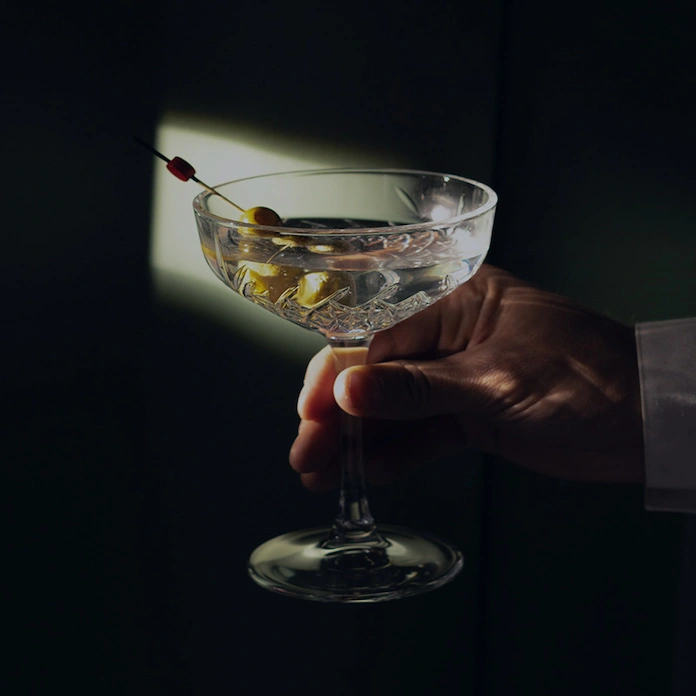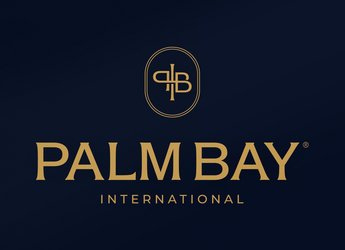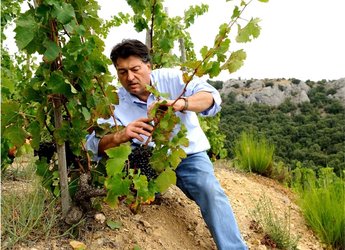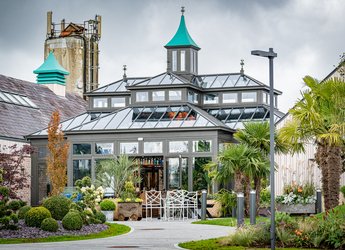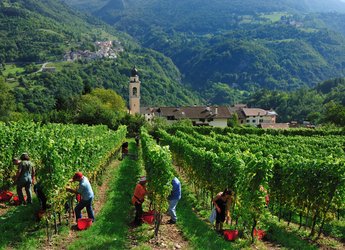
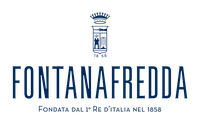
Fontanafredda The Many Firsts of Barolo’s Fontanafredda Wines
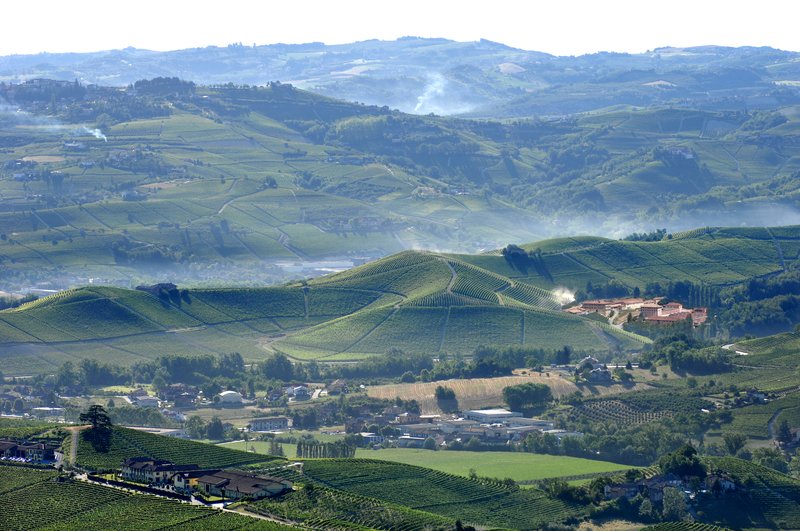
Fontanafredda has an exciting history — one that is peppered with important firsts, both for the region and the wine world at large. So, it stands to reason that their name has long been a byword for pinnacle expressions of Piedmont’s legendary Barolo wines.
The village of Fontanafredda in Serralunga d’Alba was built following the purchase of the eponymous estate in 1858 by King Vittorio Emanuele II of the House of Savoy, the first king of unified Italy. Twenty years later in 1878, the king’s son Emanuele Alberto, Count of Mirafiori, took over the estate and, as a nod to the House of Savoy, commissioned the painting of every village building in bold, brown and ocher stripes — the traditional Savoy colors. (The stripes, aka “le righe,” endured and remain a key part of Fontanafredda’s iconic visual identity to this day.)
Later that same year, the Count released the world’s first bottle of nebbiolo wine labeled “Barolo.”
Fontanafredda’s drive toward innovation did not stop with the Count. Nearly a century later, they became the first winery to produce a single vineyard-designated Barolo, Vigna La Rosa, in 1964. Then in 1988, Fontanafredda produced the first commune-designated Barolo with the release of their Barolo del Comune di Serralunga d’Alba.
Today, with visionary entrepreneur and Piedmont native Oscar Farinetti at the helm, new ideas flourish and progress continues. Since the 2018 harvest, Fontanafredda is the largest certified organic winery in Piedmont and is also the only winery in Barolo whose entire estate — Barolo’s largest and oldest “monopole” — is classified as a Menzione Geografica Aggiuntiva.
Fontanafredda has been instrumental to the growth and international awareness of Barolo, and they continue to lead wines from Piedmont into the future by championing sustainability and working to encourage a strong, vibrant community of local growers and artisans.
Terroir
Piedmont’s climate is typically continental, influenced by both balmy, Mediterranean warmth and cooling air sweeping down from the Alps — the clashing of which leads to a marked diurnal swing where chilly evenings give way to foggy mornings and later, warm and sunny days. Within the Barolo DOCG, soils consist of two main types: clay-dominant Tortonian and sandy, limestone-rich Serravallian/Helvetian. In general, the former yields wines that are lighter and more accessible in their youth, with a highly perfumed, velvety-soft character; the latter delivers powerful (yet elegant) and austere wines with more color, body, and structure.
Fontanafredda’s vineyards span these different soils, with different textures present even just a few meters apart — from looser soils with as much as 50% sand (at the farthest end of Serralunga d’Alba and Barolo) to more loamy and clay-dominant soils (in the highest area of Serralunga).
They are also one of the last estates to have maintained extensive woods, with a woodland area of 12 hectares / 30 acres, helping increase plant and animal biodiversity that further facilitates their organic farming practices.
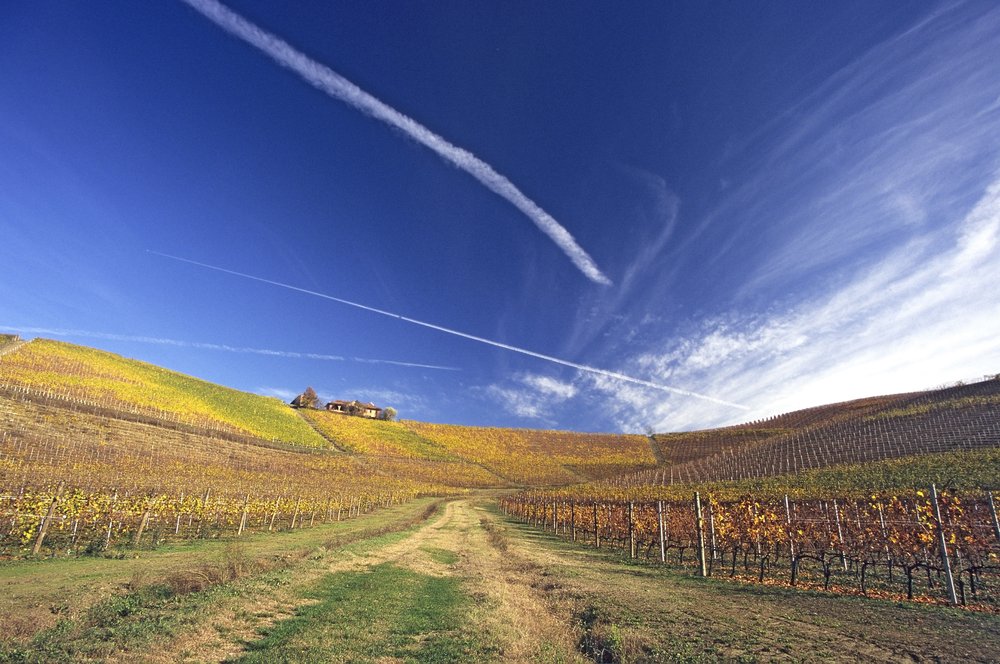
Viticulture
Fontanafredda has 120 hectares / 297 acres of property, divided among the municipalities of Serralunga d'Alba, Barolo, Diano d’Alba, Dogliani, Farigliano, Alba, and Rodello at altitudes between 250 to 420 meters / 820 to 1,378 feet. The vines themselves are as old as they are diverse, planted between 1940 and 1999, with massal selection taking place whenever replacing vines or replanting vineyards to preserve the genetic variability that has always distinguished Fontanafredda-grown grapes. Among the varieties grown are barbera, dolcetto, nascetta, pinot noir, chardonnay, and moscato. But of course, it is their iconic nebbiolo that commands much of the attention.
Nebbiolo may be fickle and difficult to grow, but it rewards the careful vigneron with incredibly nuanced expressions of terroir — presenting even the most subtle of differences in soil composition with the right care, as Fontanafredda has demonstrated for generations.
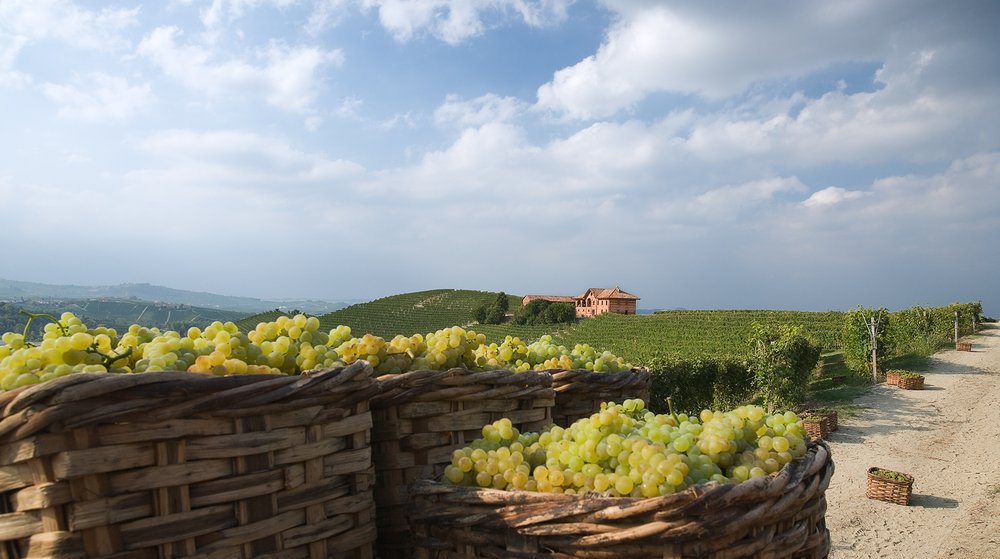
In the Cellar with Fontanafredda
Led by Technical Director and Chief Winemaker Giorgio Lavagna, along with long-time Chief Agronomist Alberto Grasso (who leads the estate’s organic viticultural advancements), the Fontanafredda team are committed to sustainability and innovation at the winery, while building on the historic legacy for which Fontanafredda wines are known. Under the pennant of organic farming, their production philosophy includes the use of indigenous yeasts, reduced sulfites, and aging in premium Allier and Slavonian oak casks when applicable.
At the Intersection of Art + Sustainability
Forward-thinking Fontanafredda has launched a new, dual-sided “Renaissance” in Barolo that mindfully aims to further elevate their region and their community.
First, a decade of artistry. To mark the 30th anniversary of Barolo Serralunga d’Alba (the first commune-designated Barolo bottling and the flagship of Fontanafredda wines), every new vintage of Fontanafredda Serralunga d’Alba from the 2018 release through the 2028 release will sport a different theme and unique label, drawn by local Italian artists. As Fontanafredda tells us, the themes will be based on 10 values or feelings that have helped give rise to the rebirth of our civilization: hope, trust, courage, optimism, perseverance, luck, gratitude, pride, harmony, and enjoyment.
Then, a new era of green. “The Green Renaissance is a new Renaissance, that brings the Earth to the center of everything again, with the aim of creating a big international community built on trust in one another,” says proprietor Oscar Farinetti. “We are going to achieve that goal with wine … green wine. Green inside and outside; completely sustainable.”
As the largest certified organic winery in Piedmont, Fontanafredda purifies and reuses all water, including rainwater; forklifts and tractors are electric or biomethane-powered; solar energy and sensors in lamps allow for reduced energy consumption; glass bottles are a minimum of 80% recycled material; and one-piece corks are made from renewable raw materials that are also recyclable.

